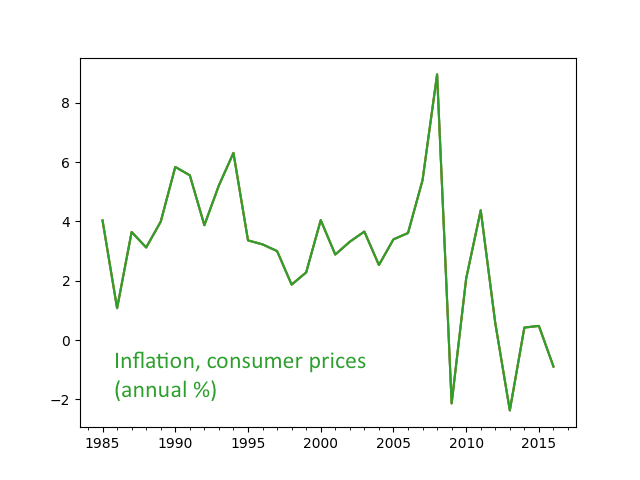A review of books on Power-Line Communication

Let's jump right in, starting with the older books Hrasnica 2004 and Carcelle 2006. It is probably not surprising that these are rather outdated and not really worth reading, anymore. The book by Held 2006 is similar in spirit to Carcelle's but does a much better job as an introductory text. Half the book is still outdated. The most comprehensive book to date is Ferreira et al. 2010. The latter is nicely complemented by Latchmann et al 2013 with its focus on Homeplug AV and IEEE 1901. The most recent book by Berger et al. 2014, although not very cohesive, covers topics not found anywhere else amongs the books reviewed here, notably HomePlug AV2. Advanced topics such as dynamic notching for EN 50561-1 are covered, too, and so is IEEE 1905.1, the cutting edge of communication system integration.
H. Hrasnica et al., Broadband Powerline Communications Networks
Wiley, 2004
This book predates IEEE 1901 and therefore its content is somewhat dated. The focus lies in the design of low-voltage access networks (sometimes called the "last mile") for energy-related services. This means that topics such as PLC transmission channel characteristics are treated only in a cursory fashion. Some modern aspects, such as notching, are not discussed at all.
One of the authors is a contributor to the more comprehensive and up-to-date book "Powerline Communications" by Ferreira et al., which seems to be the more relevant read.
X. Carcelle, Power Line Communications in Practice###
Artech House, 2006
This is an early introductory book targeted at the sophisticated home user. The book has two parts: Part I is dedicated to the HomePlug specification, covering architecture, functionality, and security. Basics such as capacitance and inductance are briefly introduced. The second part focuses on practical aspects. Applications and available equipment (as of 2006) are discussed, followed by configuration walk-throughs for Linux and Windows, with ample screenshots.
Being too challenging for the layman, and too shallow for the expert, even in 2006 the purpose of the book was not clear.
G. Held, Understanding Broadband over Power Line###
Auerbach Publications, 2006
The book addresses a broad audience and therefore roughly half the book is comprised of tutorial chapters which may still be useful to some readers. The rest of the book covers topics such as EMC (electromagnetic compatibility), BPL field trials, standards and organizing bodies, etc., most of which is outdated.
The book is similar in sprit to Carcelle's, but does a much better job in covering the basics.
J. Anatory et al., Broadband Power-line Communication Systems###
WIT Press, 2010
This book was written with a focus on the study of power line networks based on transmission line (TL) theory. As such, it complemented Hrasnica et al. which mostly covered the design aspect of PLC networks. Although this book is short (192 pages), the transmission line theory and practice is covered in depth, supported by many diagrams and tables.
The exclusive focus on TL theory and practice makes this book a valuable resource.
H. Ferreira et al., Power Line Communications, Wiley###
Wiley, 2010
An impressive roster of 31 authors contributed to this book, covering a wide spectrum of topics: Channel characteristics, EMC (electromagnetic compatibility), coupling, modulation and coding techniques, protocols and standards. The topics are covered in depth, completed with extensive lists of references to research papers.
Since the book was published in 2010 it misses some of the recent developments. For example, HomePlug AV 1.0 is covered, but the HomePlug Green PHY specification, released in 2010, is not. Luckily, the 2013 book by Latchmann et al. fills that gap.
This is an authoritative book. It would be nice to see a second, updated edition of "Power Line Communications".
A. Latchmann et al., HomePlug AV and IEEE 1901: A Handbook for PLC Designers and Users###
Wiley, 2013
This book authored by a group of academics and Qualcomm employees. They set themselves the goal to provide "a clear and simple overview of key features of the HomePlug AV specification and the associated IEEE 1901 standard". Bringing clarity and simplicity into a complex specification is a tall order, and indeed the authors descend into the acronym-laden details. (The acronyms are listed and referenced in the Appendix.)
The structure of the book is quite logical, working through the layers and "planes" that make up the HomePlug specification, starting with the physical layer and ending with network formation and security. Two more chapters are dedicated to MAC features and Management Messages. Finally the book is rounded with concluding chapters, each a dozen or so pages long, on both HomePlug Green PHYâ„¢ and the next generation HomePlug AV 2.
If you are into HomePlug AV this is the must-have book.
S. Gorshe et al., Broadband Access: Wireline and Wireless Alternatives for Internet Services###
Wiley, 2014
For the largest part this book is not about power-line communicaton. The reason I included it here is that this book offers a view of PLC as one of many technologies for broadband access.
Thus, inevitably, the chapter on PLC therefore offers only a cursory glance and ends with a reference to the IEEE COMSOC reading list mentioned above.
What makes this book interesting are the other topics covered in this book, amongst which: Fiber optic, passive optical networks ("PONs"), DSL, DOCSIS, WiFi IEEE 802.11, UMTS and LTE.
L. Berger et al., MIMO Power Line Communications: Narrow and Broadband Standards, EMC, and Advanced Processing###
CRC Press, 2014
MIMO (multiple-input multiple-output) is essential in wireless systems such as LTE or WiFi 802.11n, and in 2011 HomePlug AV 2 added MIMO support, thereby doubling the capacity. The title of the book reflects the diversity of topics, divided into four parts. Part 1 covers channel characteristics and modelling of narrowband and broadband PLC. Part 2 deals with EMC (electromagnetic compatibility) and MIMO capacity, followed by Part 3 on current PLC systems such as the IEEE 1901 standard and the compatible HomePlug AV2 and ITU G.n specifications. Chapters on narrowband standards and IEEE 1905.1 (which defines an abstraction layer on top of PLC, WiFi, Ethernet, etc.) are also included. Part 4 covers advanced PHY and MAC layer processing, and finally Part 5 goes through several actual implementations.
The book is a loose collection of articles and as such it lacks cohesiveness. But, the up-to-date articles are written by the experts in the field cover topics that cannot be found in any other book reviewed here. For example, there is a chapter covering dynamic nothing as required by the European standard EN 50561-1 on electromagnetic compatibility of PLC products. Another chapter is dedicated to IEEE 1905.1.
As a first read this book would be hard to digest, but complemented with Ferreira et al, 2013 and/or Latchmann 2013 it is an invaluable source of information.










